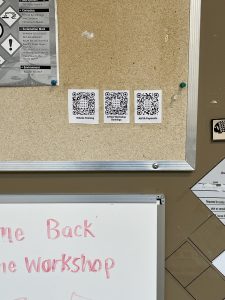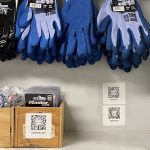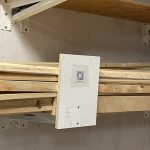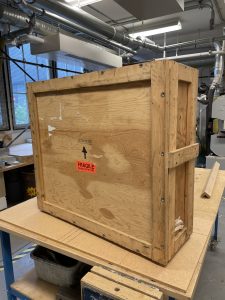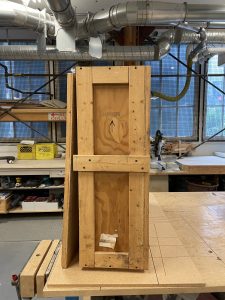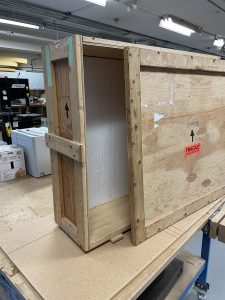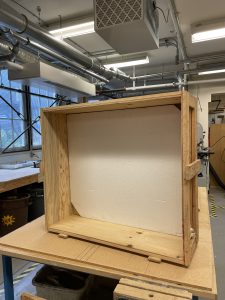Hello! This is a guide to get you prepared and ready to start using the AHVA Workshop for the coming school term
Booking a Time Slot
Before coming to the workshop in person you will first need to book online ahead of time.
Visit Workshop Bookings to view available dates & times for each of the workstations in the shop. You can log in and navigate the site using the daily view, weekly view, and monthly view to help you see the available dates and times. You can also choose between the different workstations and view their calendars separately.
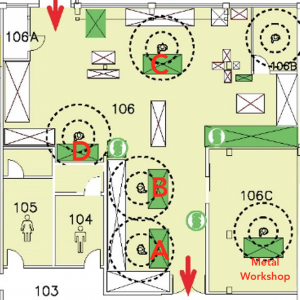
This is a layout of the locations of the different workstations on the workshop you can choose to book from. Workstation D is located on the downdraft table while workstations A, B, and C are regular work tables. The metal workshop station is located in the metal shop along with its resources.
Once you find a date and time that works for you at the workstation you want and is also open on the schedule, continue by clicking on the time slot. This will bring up a form where you will fill out your information. You can choose to book the station for either 30 minutes or 1 hour in the drop-down menu. Depending on how certain your availability is, you can choose to book either a ‘tentative’ or ‘confirmed’ slot. This way, even if you are unsure about your booking, your time and station is still reserved for you.
If your desired date is far in the future, there is a dropdown calendar at the top left corner with the current date you are viewing. Click it and you will be able to choose the specific month and day you need. If your time overlaps with someone else’s, or a cleaning time, you will be prompted with a scheduling conflict page. You can then click to go back to the booking times and pick a new time of day or change the duration of your booking.
To cancel a booking you can contact Andrew via email: andrew.keech@ubc.ca
Preparation for Your Visit
Before your selected time slot in the workshop please make sure to be prepared with:
- Any materials you may need for the project you are preparing to work on
- Extra tools that cannot be provided by the workshop. Below is a list of tools available to you in the workshop:
Power Tools
- Staple guns
- Saws (circular saws, jigsaw, table saw,
chop saw, bandsaw, reciprocating saw)
- Drills (corded/less)
- Drill press
|
- Dremels
- Nail guns
- Sanders (corded/less, orbital, palm, stationary)
- Spray guns (airbrush and HVLP)
- Soldering irons
|
Hand Tools
- Hot glue
- Measuring tools
- Clamps
- Hand saws
|
- Chisels & Files
- Caulking gun
- Wrenches
- Assorted hand tools
|
- Your PPE (Personal Protection Equipment) that are required
- Face covering
- Safety glasses (available for purchase, $3 ea.)
- Earplugs (available for purchase, $2/6 pair)
- Gloves (available for purchase, $2/4 pair)
- Dust mask (if applicable)
- Long pants and closed-toe shoes
Workshop Access and Safety
When you arrive at the workshop for your time slot please make sure to enter from the doorway in the alley on the east side of the building. Please make sure to be wearing a face-covering before entering the building and continue to wear it at all times during your visit. You must also have your PPE ready and with you before going to the workshop,
Take every precaution to ensure your own safety and that of others. If at any time you are unsure how to use any tool or piece of equipment, consult the technician or a workshop assistant.
